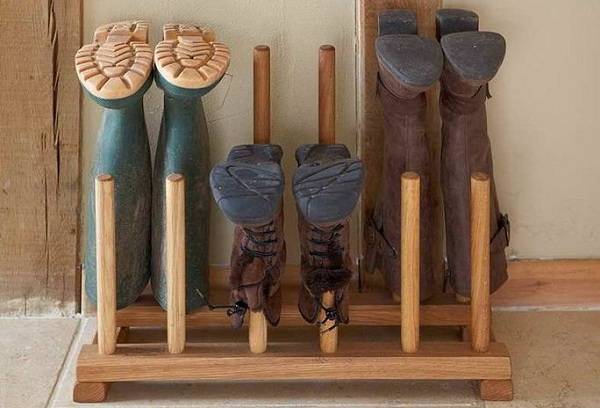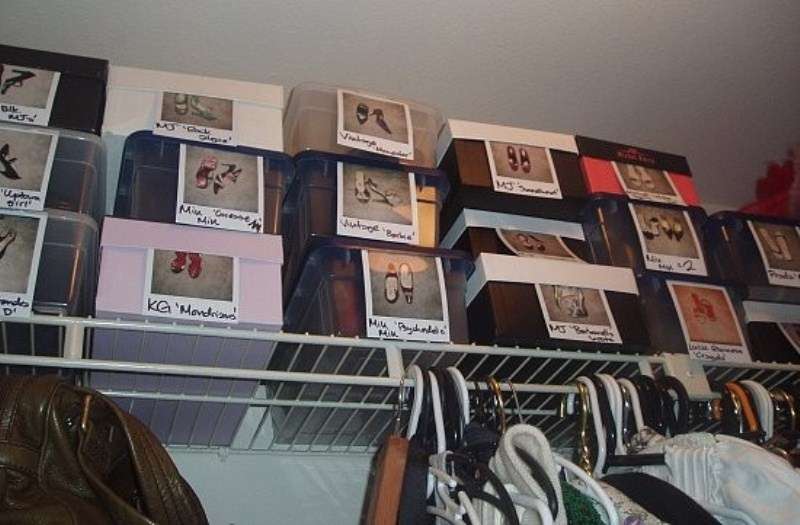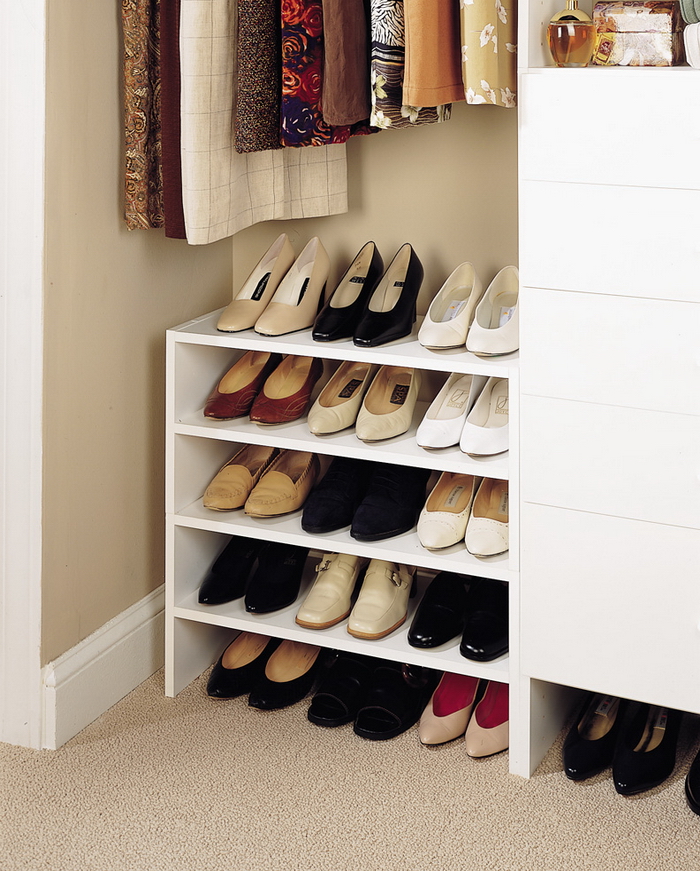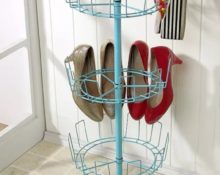The change of seasons forces people, like plants and some species of animals, to change their winter appearance to a lighter summer one, and vice versa. With the arrival of the long-awaited warmth, every person faces the urgent need to send warm boots for storage, and this issue cannot always be resolved the first time.

Preparing shoes for storage: inspection, sorting, cleaning.
Before sending boots or warm sneakers for the winter or packing light shoes and sandals until next summer, they must be prepared in a certain way:
- Replace worn heels and hem or glue loose seams.
- Wash the sole and front part clean.
- Use special electric insoles to dry pre-cleaned boots or sneakers. If this is not done, even seemingly dry shoes can become moldy on the inside and have unsightly stains on the outside.
- Washed and dried shoes made of natural or artificial leather should be lubricated with special creams for care and protection. Suede and nubuck must be treated with special dyes that will restore and preserve the color for a long time.
- Before storage, it is recommended to treat the inner surface of closed models with special antibacterial compounds, which are sold in shoe stores.

Organizing proper shoe storage:
For any type of shoe, depending on what season it belongs to, what materials it is made of and how often it is used, you can apply different techniques and tricks for daily and seasonal storage. The following storage secrets deserve attention:
Seasonal shoes
Winter boots are best stored in containers that allow air to pass through. This will prevent mold and mildew from forming inside and out. Sneakers and shoes that are stored for longer than 2-3 months should be tightly stuffed with toilet or acid-free paper, which will help maintain their shape. Newsprint is not suitable for these purposes, as it can print on light skin and discolor bright natural and artificial materials.
Winter and summer shoes are best stored at room temperature. On a cold open balcony, in a garage or in direct sunlight, even the most durable and high-quality one will quickly become unusable.

Casual shoes
Proper storage of everyday sneakers and shoes is also of great importance. It is necessary to provide convenient access to those models that are used most often, and divide them by “weather”. Also, for convenience, it is necessary to sort shoes by “family members”.
It would be best to allocate a separate place in the closet or a shelf in an open shoe rack separately for adult and children's shoes. Don’t forget about a separate place for dirty street shoes and for sandals or shoes that have already been washed and cleaned. This will not only allow you to maintain order in the hallway, but will also make it clear what other things remain undone.

Shoes made from different materials
It is known that natural fur, if it is not ventilated and dried, can acquire an unpleasant odor, which will be extremely difficult to get rid of. Therefore, when sending boots and boots made of fur for the winter, you need to make sure that they have constant access to air. Good ventilation in boxes and containers with “natural” material will also save the fur from moths. As additional measures of protection against these ubiquitous butterflies, you can use special traps and tablets.
High-top boots made of varnish and nubuck require special attention during seasonal and everyday storage. To prevent expensive products made from natural and capricious materials from becoming deformed, it is necessary to purchase spacers and special molds to preserve the shape of the boot and toe.

Ideas on where to store shoes
Housewives who love order will never allow themselves to dump everything into one bag and throw it on the balcony or in the closet. They know the best way to store unused shoes is:
In boxes
The factory box, if it is not torn or deformed, should not be thrown away. It can be an excellent container for later storing unused shoes. The undeniable advantages of its use include:
- ensuring the required level of humidity and protection from light;
- compliance with shoe sizes and heights;
- the fact that you don’t have to pay for it.
Among the negative aspects of use are:
- It is quite difficult to find boxes that match each other in size and height, which complicates the process of organizing storage space in the closet;
- A box that wears out over time can become a source of dust and debris.
Advice! To make it easier to navigate among the numerous cardboard shoe boxes, you can glue on each of them a picture of the pair stored in it or write an inscription with a pen.

In the closet
Having a separate shoe closet in your furniture arsenal greatly simplifies seasonal and everyday shoe storage for the whole family. If you have a closet or chest of drawers, then there is no need for boxes - sneakers or flip-flops can be neatly arranged and placed in a drawer. Long over-the-knee boots can be hung in the closet on special hangers with soft fastenings, which will avoid creases and deformation of fashion items made of genuine leather, varnish or suede.
If there is no separate closet, space can be found in a large walk-in closet or wardrobe. A specially designated section on the mezzanine or a box can combine the functions of both seasonal and everyday storage. It is enough to push away what is not worn now and put on the first line what is more relevant.

On shelves
Open shelves in walk-in closets and large closets can be great places to display shoes. Cleanly washed and well-groomed designer shoes, arranged in even rows, can decorate the dressing room of any fashionista and at the same time cause her a lot of trouble.
Dust and light can reach boots, shoes or ballet shoes located on open shelves, which will significantly reduce their appearance.Special bags in which you can pack any model will help you avoid this. Made from special “breathable fabrics”, they will protect your favorite boots from fading and help save more space. The bags are easy to wash and store when folded, as they do not take up much space. Even though they slightly spoil the overall appearance of the dressing room, they allow the shoes to remain presentable longer.
Advice! Textile bags are included with most models; you can find them in the box.

In organizers
Plastic organizers can be purchased at any hardware store. They are widely used in everyday life for storing food products, small essential items, and household chemicals. Transparent plastic boxes can also be used for shoes.
To do this, you need to purchase plastic boxes of suitable size and pack the washed shoes in them. The only thing that needs to be done in advance is to drill several small holes in the walls or lid that will allow air to circulate freely.
Advice! To make the containers look more neat, you can cover the inside with paper or remnants of wallpaper.

Interesting non-standard solutions
You can diversify a boring interior and at the same time organize the storage of unused shoes using:
- wicker baskets stacked on top of each other in which boots, sandals or moccasins are placed;
- plastic pipes cut into small fragments, which can be laid in the form of a honeycomb on a low shelf. Such a shoe rack can be an excellent decoration for the hallway;
- fabric organizers hung on cabinet doors and wardrobes, in whose pockets you can put small shoes, slippers or slippers;
- plastic buckets painted in light and cheerful colors can be an excellent place to store children's shoes; they can be placed on the balcony or in a large hallway;
- For lovers of expensive vintage shoes, chests of drawers with transparent shelves and doors that open an overview of what is contained inside are suitable for storing collectible models.

Soft ottomans with internal storage compartments will help to significantly save space in the hallway. You can place casual or indoor shoes in them so that they are not conspicuous and do not take up extra space near the door.


 0
0





